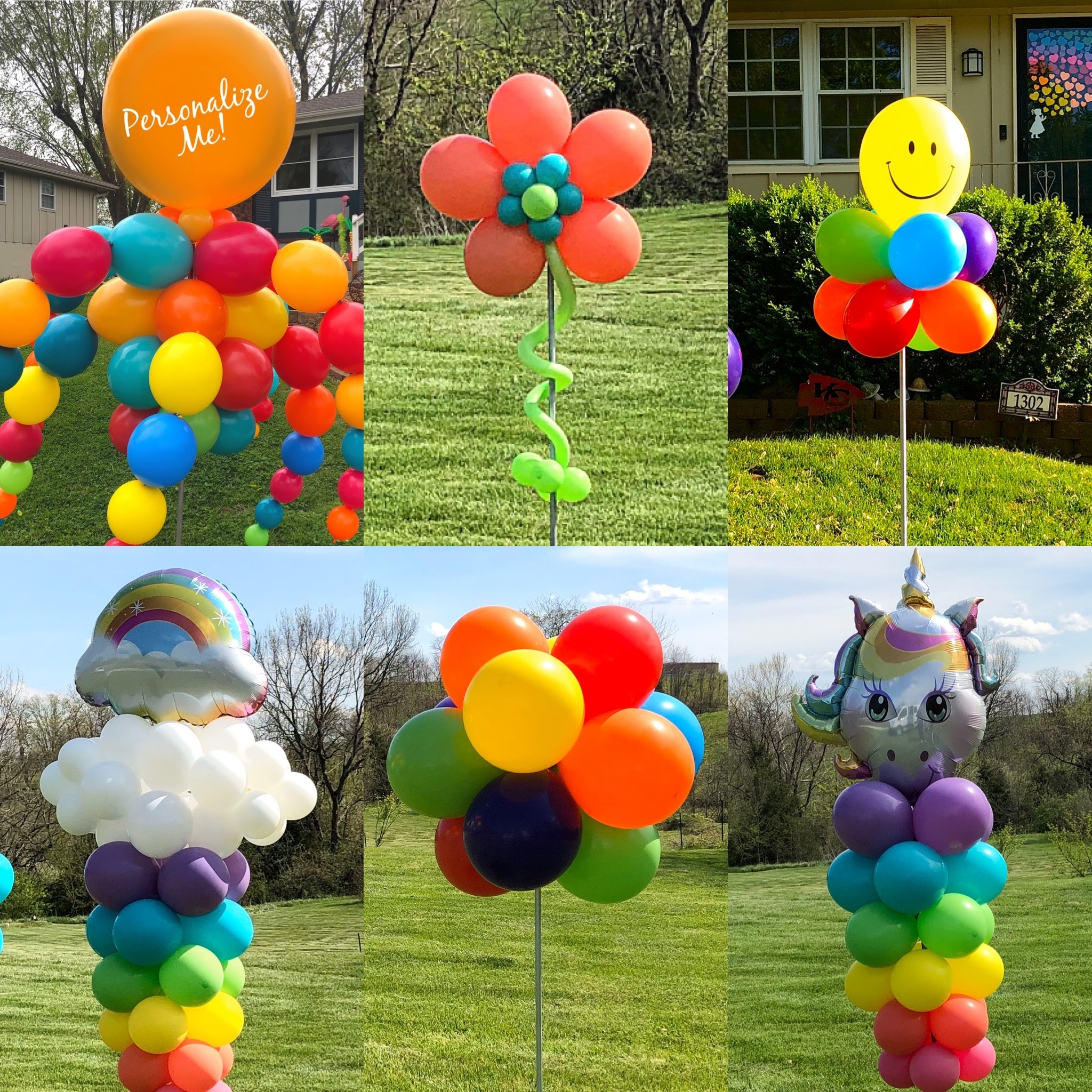When you are planning a celebration outside, or just looking to add some cheer to your garden space, picking the right decorations really makes a difference. Balloons, in particular, bring a certain lighthearted spirit to any setting, yet choosing ones that stand up to the elements can feel a bit like a guessing game. You want something that looks good, feels good, and, quite simply, lasts through the party, so you are not left with sad, deflated bits before the fun has even truly begun.
It is rather important to think about what makes a balloon truly suitable for open-air use. The sunshine, the wind, perhaps even a little rain shower, these things can really test a balloon's ability to stay looking its best. A regular party balloon, the kind you might use indoors, might not hold up as well when faced with nature's various moods, you know? So, finding those special balloons that are built for the great wide open is a pretty smart move for any event that steps beyond four walls.
This guide aims to help you figure out what makes some balloons stand out as the very best for outdoor settings. We will look at what they are made of, how big they should be, and even what colors work well outside. By the end, you will have a much clearer idea of what to look for, helping you pick out the perfect additions for your next open-air gathering, which, to be honest, makes planning a whole lot easier.
Table of Contents
- What Makes a Balloon Great for the Outdoors?
- Considering Material for Outdoor Balloons
- How Does Size Affect Outdoor Balloon Performance?
- Picking the Right Colors for Outdoor Balloons
- Where Can You Find the Best Outdoor Balloons?
- Looking at Durability for Outdoor Balloons
- When Is the Best Time to Use Outdoor Balloons?
What Makes a Balloon Great for the Outdoors?
When we talk about something being "the best," it often means it performs its function better than anything else, or it is the most suitable for a particular situation, you know, like when someone says they like chocolate "best" out of all sweets. For outdoor balloons, this idea of "best" really centers on how well they handle the natural elements. A balloon that might be perfectly fine inside a house, where the air is still and the temperature steady, could quickly become less than ideal when placed outside. The sun's warmth, for instance, can make certain materials expand too quickly, perhaps leading to a sudden pop. Wind, too, can whip balloons around, causing them to tangle or tear if they are not made to withstand such movement. So, a truly good outdoor balloon is one that resists these challenges, staying full and bright for the duration of your event, or, as it were, for as long as you need it to be a part of the scenery. It is about how well it holds up to the actual conditions it will face, which is, honestly, a pretty important consideration for party planners.
Considering Material for Outdoor Balloons
The stuff a balloon is made from plays a very big role in how it behaves outside. You see, some materials are simply more forgiving when it comes to changes in temperature or getting a bit of a breeze. Latex balloons, which are quite common, can be a good choice, but you need to think about their thickness. Thicker latex, you see, tends to be more resilient, offering a better chance against punctures from stray branches or rough surfaces, which is something you might encounter in a garden. Then there are foil balloons, often called Mylar balloons, which are made from a thin, metallic film. These generally hold their air for a longer stretch of time and are less likely to pop from temperature changes than their latex counterparts. However, they can sometimes be a bit more prone to creasing or looking a little deflated if they get too cold. So, it is almost like picking the right fabric for a coat; you want something that offers the right kind of protection for the weather you are expecting. Thinking about the material helps ensure your outdoor balloons stay looking their very best, for as long as they are needed, which is, of course, the whole point.
How Does Size Affect Outdoor Balloon Performance?
The dimensions of your outdoor balloons actually make a significant difference in how they perform in the open air. It is not just about how grand they look, but also about how they react to wind and temperature. Smaller balloons, for example, are generally easier for a gentle breeze to carry away, or they might get tangled more readily in shrubbery. They also tend to have less surface area to absorb heat, so they might not expand as dramatically in the sun, which could be a good thing, but they also might deflate faster if the temperature drops. On the other hand, very large balloons, while certainly making a statement, present a bigger surface for the wind to catch. This means they need to be anchored much more securely, or they could become quite a challenge to keep in place. You might find yourself needing heavier weights or more robust tying methods to keep them from floating off into the sky, which, you know, can be a bit of a bother. A medium-sized balloon, in many cases, offers a good balance. It is substantial enough to be seen and to resist light winds, yet not so large that it becomes a struggle to manage. So, thinking about the size really helps in choosing the best outdoor balloons for your particular gathering, making sure they stay put and look good.
Picking the Right Colors for Outdoor Balloons
The color of your outdoor balloons might seem like a purely aesthetic choice, but it actually has a practical side, especially when the sun is shining brightly. Darker colors, like deep blues or rich reds, absorb more sunlight, which means the air inside them heats up more quickly. This increased internal temperature can cause the air to expand, putting more pressure on the balloon's material. In some cases, this can lead to the balloon popping sooner than a lighter-colored one would, which is, you know, not what you want when you are trying to make things festive. Lighter shades, such as white, pastels, or even metallic silver, reflect more of the sun's rays. This helps keep the internal temperature of the balloon more stable, reducing the risk of premature bursting. So, while you might have a favorite color scheme in mind, it is worth considering how the sun will interact with those hues. For a long-lasting display of outdoor balloons, choosing colors that are less prone to absorbing heat can really help them stay inflated and vibrant for a longer period. It is a small detail, perhaps, but one that can make a difference in the overall success of your outdoor decorating efforts, truly.
Where Can You Find the Best Outdoor Balloons?
Finding the very best outdoor balloons is a bit like knowing where to look for the freshest produce; you need to consider the source. You might think any party supply store would have what you need, but specialized retailers or online shops that focus on event supplies often carry balloons made specifically for outdoor use. These places are more likely to offer balloons that are described as "weather-resistant" or "UV-protected," which are pretty good indicators that they are built to last outside. Sometimes, the packaging itself will tell you if the balloon is suitable for open-air conditions, so it is a good idea to read those labels carefully. Local party shops might have a limited selection, but larger event supply centers, or even some florists who do event decorating, often have a wider array of options. It is really about seeking out those suppliers who understand the particular demands of outdoor decorating, as they are more likely to stock products that can stand up to the elements. This way, you can be more confident that the outdoor balloons you choose will perform as expected, which, in a way, saves you from potential disappointment.
Looking at Durability for Outdoor Balloons
The lasting power, or durability, of outdoor balloons is a key characteristic that sets the good ones apart from the rest. Think of it this way: if you say something "was the best ever," it means it performed at its highest possible level up to that point. For balloons, durability means they can withstand the various stresses of being outside. This includes not just the material itself, but also how well the seams are sealed and how consistently the thickness is distributed across the balloon's surface. A balloon with thin spots or weak seams is much more likely to fail, especially when exposed to temperature changes or light impacts. Some balloons are treated with special coatings that offer extra protection against UV rays, which can break down the material over time, causing colors to fade and the balloon to weaken. Others might be designed with a bit more elasticity, allowing them to expand and contract more safely with temperature fluctuations. So, when you are choosing, it is helpful to look for descriptions that mention terms like "heavy-duty" or "long-lasting," as these suggest a higher level of resilience. This focus on durability helps ensure your outdoor balloons remain a cheerful part of your celebration for as long as you need them, without any unexpected deflations or pops, which, you know, makes for a much happier event.
When Is the Best Time to Use Outdoor Balloons?
Deciding when to use outdoor balloons effectively is a bit like knowing the "best way to use the best way," meaning it depends on the specific circumstances and what you want to achieve. While balloons can certainly add flair to any outdoor gathering, certain conditions are more favorable for their display. For instance, a day with mild temperatures and minimal wind is almost always the ideal setting. Extreme heat can cause balloons to pop, as we have discussed, and strong winds can make them difficult to control, perhaps even tearing them away from their anchors. Using outdoor balloons during a light drizzle might be okay if they are made of water-resistant material, but heavy rain could weigh them down or make them look less appealing. So, if you are planning an event, checking the weather forecast beforehand can help you decide if balloons are a good idea for that particular day. Sometimes, it is also about the timing of the event itself. For a daytime party, lighter-colored outdoor balloons might be a better choice to avoid heat absorption. For an evening event, perhaps larger, more reflective balloons could catch the artificial light more effectively. It is about aligning the balloon's characteristics with the environmental conditions and the desired effect, which, honestly, makes all the difference in how they look and last.


